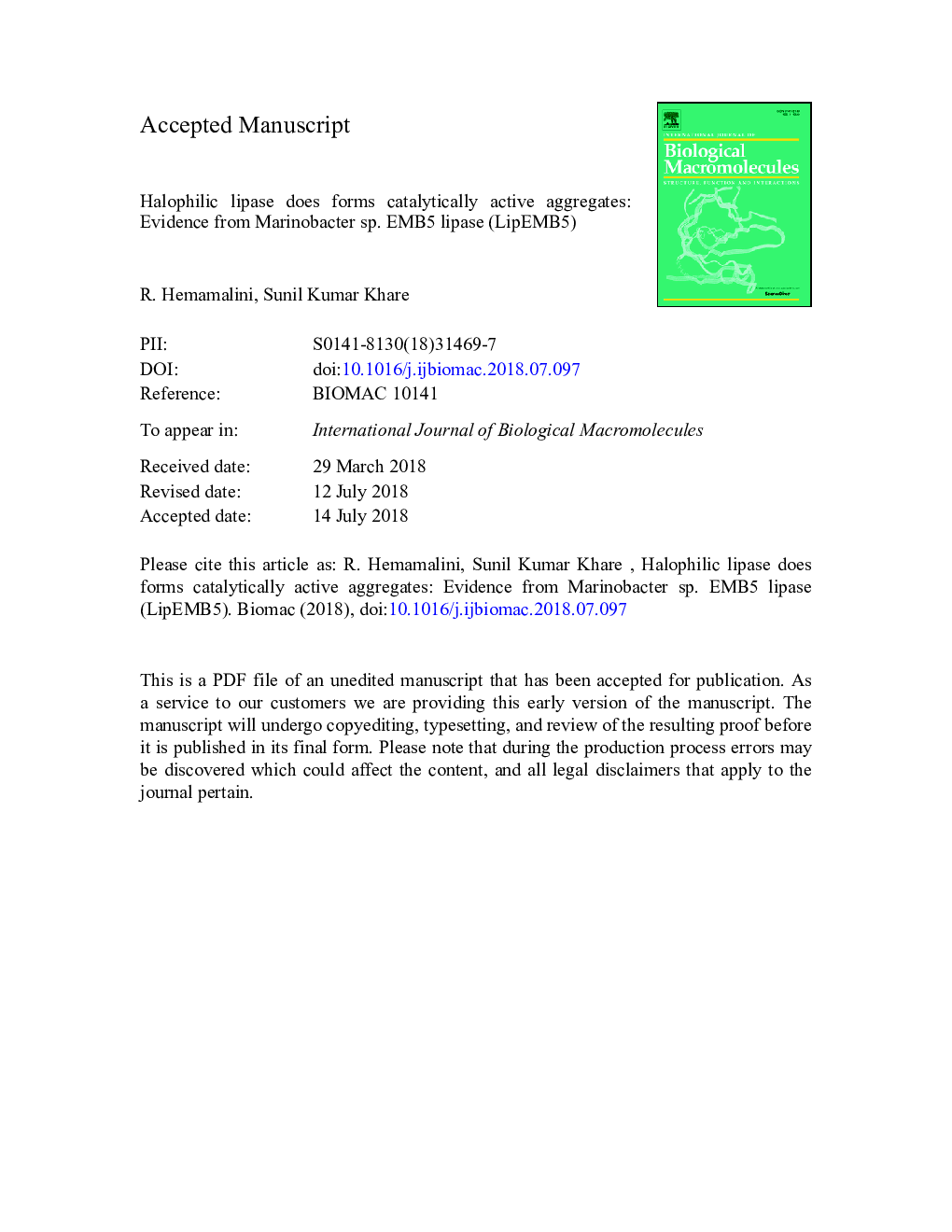| Article ID | Journal | Published Year | Pages | File Type |
|---|---|---|---|---|
| 8326671 | International Journal of Biological Macromolecules | 2018 | 35 Pages |
Abstract
Lipases are prone to aggregation due to the presence of hydrophobic surface and corresponding hydrophobic interactions. However, like most lipases, halophilic lipases do not tend to aggregate owing to the presence of charged surface. Conversely, Marinobacter sp. EMB5 produces a unique lipase (LipEMB5) which tends to form functionally active aggregate, despite a presence of 2% (w/v) NaCl in the environment. Gel filtration using Sephacryl S-200 column resulted in elution of lipase in the void volume despite a high salt level, suggesting aggregation behavior. The aggregated form of LipEMB5 (172.35â¯kDa) was shown to have specific activity of 16.3â¯IUâ¯mgâ1 protein. The disaggregated form (<6â¯kDa) with increased elution volume was also obtained by inclusion of 70% 2-propanol in the elution buffer. It was catalytically less active (0.086â¯IUâ¯mgâ1 protein specific activity) in comparison to aggregated form. Aggregated and 2-propanol induced disaggregated forms were characterized in terms of DLS, biochemical, morphological, and structural properties. Broadly, the aggregated form showed 24 times more activity with 1000-fold less Km compared to its counterpart. The enzymatic properties were almost observed to be same for both the species. However, better structural integrity in the disaggregated form was observed on the basis of FTIR and CD studies. Overall, the study comes out with a unique halophilic lipase from Marinobacter sp. EMB5 which have a tendency to form active aggregates in high salt laden environment.
Keywords
Related Topics
Life Sciences
Biochemistry, Genetics and Molecular Biology
Biochemistry
Authors
R. Hemamalini, Sunil Kumar Khare,
